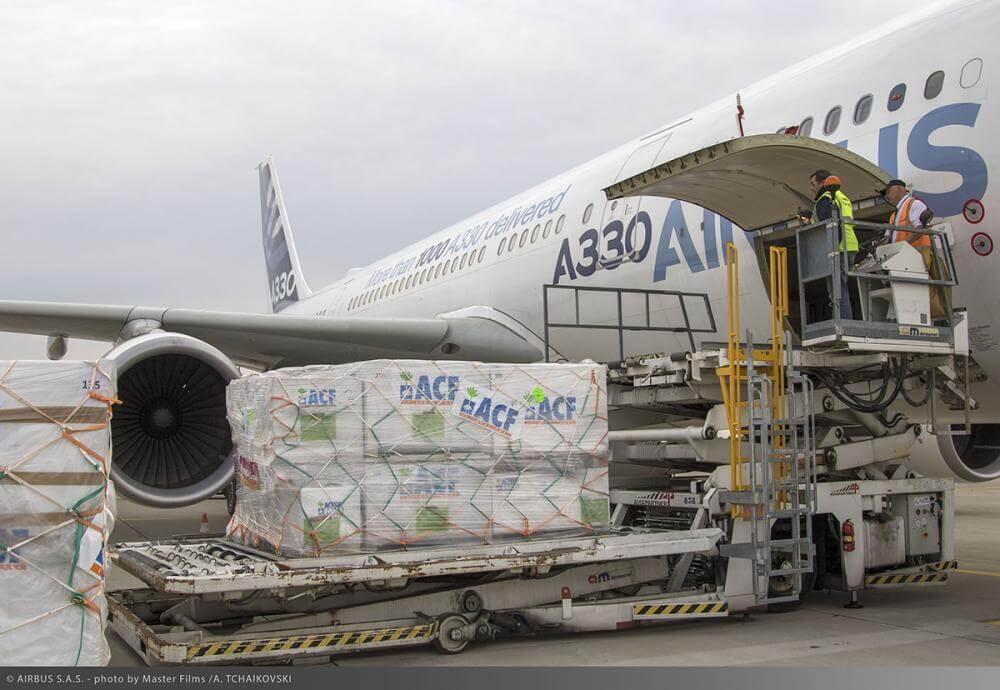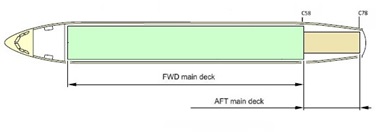Quantum-South releases quantum computing based air cargo optimization application ready to execute proofs of concept. The software aims to bring efficiency in logistics, helping companies to improve revenues and reduce costs.
Background
Quantum-South team has been working in container load optimization for air cargo since the Airbus Quantum Computing Challenge in 2019 where it became one of the global finalists.
Airbus has identified this problem as one of the most challenging in the aerospace industry.
Basically, the problem can be stated as determining the optimal loading strategy for packing merchandise in aircrafts, aiming to find the optimal configuration of maximizing the loading subject to appropriate constraints. Quantum-South developments have been focused on using quantum algorithms to address the problem.
The problem
The problem, succinctly, can be stated as follows: let there be N packages to be transported. Each package i, has a weight wi and a volume vi. The vehicle has a maximum load capacity M and a maximum volume V. The objective is to identify the optimal selection of the individual packages to be transported that maximizes the profit associated to the ULDs while respecting restrictions, such as maximum weight and length, center of gravity, shear and the shape of the fuselage.
Given the exponential increase in the number of possible combinations as N increases, the problem poses a serious challenge to be solved by classical means.
The air cargo optimization software based in quantum computing
Quantum-South is ready to work together with air cargo companies in proofs of concept (PoC) for a real business scenario, involving air cargo operations, using determined source-destination locations with an interesting complexity and a particular aircraft freighter model.
The source-destination locations can have multiple weekly flights for the same freighter where containers of different nature and priority could be arranged.
The software is flexible to air cargo scenarios as it can be adapted to business requirements/restrictions and incorporated in the optimization criteria.
The idea of the algorithm is to load the aircraft maximizing the profit associated to the ULDs while respecting restrictions, such as maximum weight and length, center of gravity, shear and the shape of the fuselage.
The software supports two decks to fill with ULDs. All the restrictions such as maximum weight and volume, center of gravity and shear are implemented taking into consideration the main and lower decks. The ULD picking list is composed of ULD of industry standard sizes, both containers and pallets. Each aircraft type, depending on the size of its fuselage, may carry a different subset of ULDs. In general, the subset of ULDs of its two decks (main deck and lower deck is disjoint given the differences in capacity). Finally, there are ULDs that can go in only one position on each deck, while others accept multiple configurations.
Adding to the dimensional and limit weight constraints, the shear force exerted on the airframe is also calculated and compared to the limit curve given by the aircraft manufacturers. The maximum allowable shear force curve can be considered as the one determined by loading the maximum allowable weight uniformly distributed along the decks. All shear force calculations are made modeling the airframe as two cantilevered beams supported in a point between the wings.
As the lower decks carry bulk cargo, it can also be factored its load, distributed uniformly along these decks. This allows to compute the full center of gravity and the shear forces.
The software supports that some ULDs could be placed in multiple positions (rotated or not) and occupy the whole width of the cargo bay or half of it.
For a particular flight, with a specific aircraft model, Quantum-South Air Cargo Optimization can work in the following scenarios, among others:
1) there are more containers to load than the freighter capacity
2) the number of containers to load is the same of the freighter capacity
3) there are less containers to load than the freighter capacity
The software can optimize based on the following goals/restrictions, among others:
a) weight & balance
b) weight & balance + profit
c) weight & balance + priority (+ profit)
These restrictions/goals come from aircraft freighter specifications and air cargo companies’ business goals.
Restrictions like incompatible merchandise, animals, explosive materials, etc. can also be factored in the optimization.
Quantum-South can integrate legacy systems to retrieve the data used to run the optimization and send it back to them.
Technical specifications
Main problem
One of the main problems in air cargo, can be stated as follows: Let there be n ULDs (Unit load devices) to be transported. Each unit has several attributes:
- A weight associated wi.
- Width and Length dimensions di, li respectively.
- An associated profit pi.
- A unique identifier of the package type Idi
The objective is to identify the optimal selection of the ULDs to be transported that maximizes the profit transported in each aircraft, to a set of restrictions that we list:
- Weight restriction: Each deck supports a maximum weight that must be respected.
- Volume restriction: There is a maximum volume of ULDs that can be transported on each deck.
- AFT bay restriction: At the tail of the aircraft, on the main deck, there is an area which, due to the width reduction of the fuselage, it is impossible to fit side by side ULDs.
Center of gravity: The center of gravity of the load carried on the aircraft must be within a specific range with respect to a target point on the length of the aircraft, in order to make the flight safe and to minimize fuel consumption.
Shear force restriction: In the same way, the load must be distributed in such a way that it respects the maximum shear force curve given by the manufacturer. Shear force is caused by the weight of the ULDs. To calculate the shear force, the plane is modeled as two cantilevered beams supported at the center of the main deck. The lower decks are supported by these same beams, this means that the shear force from the lower decks can be simply summed.

Configuration assumptions
The assumptions made regarding the load configurations taken are about the types of ULDs that can be carried:
- Firstly, the ULDs suitable for carrying on the main deck are not compatible with those suitable for the lower decks. Therefore, the set from which both sets of ULDs are selected are disjoint.
- On the main deck there are ULDs that are suitable to be placed side by side, these ULDs by rotating them 90 degrees can also be placed in the Single Row format.

